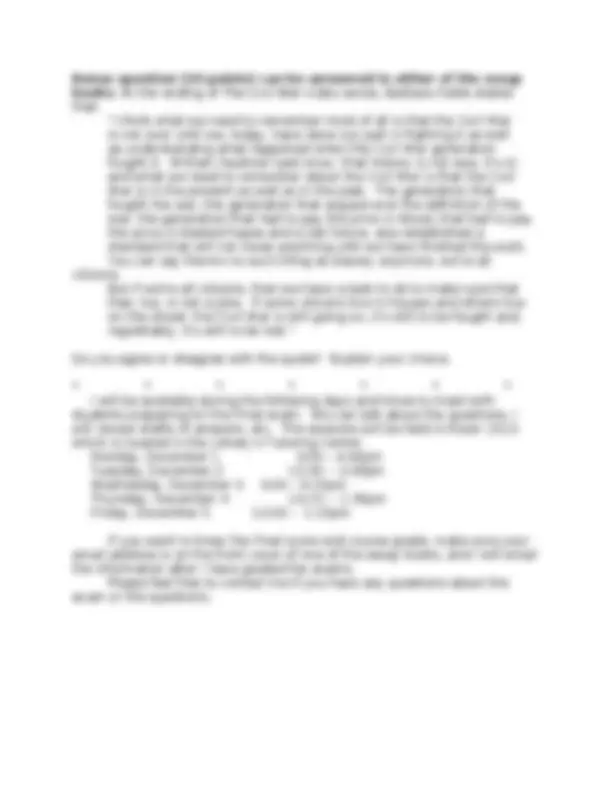



Study with the several resources on Docsity

Earn points by helping other students or get them with a premium plan


Prepare for your exams
Study with the several resources on Docsity

Earn points to download
Earn points by helping other students or get them with a premium plan
Community
Ask the community for help and clear up your study doubts
Discover the best universities in your country according to Docsity users
Free resources
Download our free guides on studying techniques, anxiety management strategies, and thesis advice from Docsity tutors
A study guide for the final exam of hist 120, a college course taught by lisa solomon at imperial valley college in fall, 2008. The guide provides information on the impacts of significant historical events, including the war of 1812, monroe doctrine, sectionalism, and the missouri compromise on the political development of the united states, as well as the difficulties and issues facing women between 1848 and 1861 and how they were addressed by the seneca falls convention. The document also includes instructions for the exam, such as the number of questions to be answered, the use of notes, and the consequences of plagiarism.
Typology: Exams
1 / 3

This page cannot be seen from the preview
Don't miss anything!


HIST 120 Fall, 2008 Lisa Solomon, Instructor Imperial Valley College FINAL EXAM STUDY GUIDE Four of the following questions will be selected for the Final exam: you will choose which two of those chosen you wish to answer. Your answers need to be as complete as possible, responding to each part of the question; use your text (a copy of which is in the library), lecture notes, handouts, and video notes. Any answer that has material from an outside source (other texts, the internet, etc.) will be marked down by 25%. You will need to bring a small blue or green book for each question. The essay books cannot contain any writing prior to the exam (this is not a take-home Final). This exam is worth 350 points toward your course grade. You may use no more than two pages of notes for reference per question (one piece of paper with notes on both sides or two pieces of paper with notes on one side of each). Any cell phone, pager, or other electronic device that makes a sound during the test will be held by the Instructor for the remainder of the test period. Any essay found to contain material that is word for word from the text or any other source, and does not have quotation marks and page numbers, will be marked for plagiarism. A score of 0 will be recorded and no make-up exam will be permitted. Any answer that contains more than two pages of material cited from the book will be marked down by 25%. Any attempts at cheating and/or plagiarism will be dealt with accordingly, and the Instructor reserves the right to lower the student's course grade to the next lower letter grade (for example, a "C" could become a "D"). You will be taking the Final exam on December 8 and December 10 (you have two class sessions to complete the Final). The Friday class has the entire period on Friday, December 12.
1. Between 1810 and 1820, the United States went through a war, political changes, and debates over slavery. Describe the impacts that the War of 1812, Monroe Doctrine, sectionalism, and the Missouri Compromise had on the political development of the United States. In your opinion, was one of these more critical to the continued independence of the country? Explain your answer. 2. What were some of the difficulties and issues facing women between 1848 and 1861? How were these issues and difficulties addressed by the Seneca Falls Convention? Did the status of women change much during this period (include differences that may have existed because of race, region, social class)? Explain your answer.
3. During the 1850s, the United States was subject to the Compromise of 1850, the Kansas-Nebraska Act, the Dred Scott decision, and the raid on Harper's Ferry. Briefly describe what each of these was about, and how they impacted the ongoing battle over slavery. In your opinion, did any of these events have more of an impact that the others on the issue of slavery and states' rights? Explain your choice. 3. Discuss some of the major social/religious, economic, and political changes that took place in this country (North, South, West, and territories) between 1850 and 1860. How did these changes add to or detract from the growing debates over slavery? 4. Describe the strengths and weaknesses of the North and South as of late